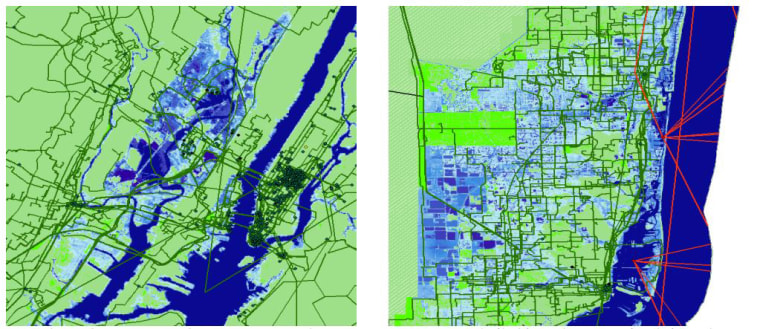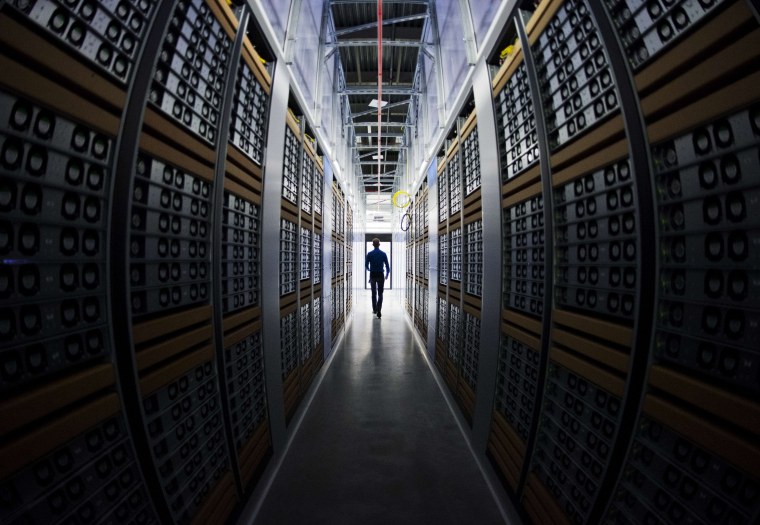From severe coastal flooding to unusually destructive hurricanes, climate change-related sea level rise is being blamed for some big environmental ills. Now comes a new worry: Rising seas could flood the underground cables that carry the internet, potentially causing widespread outages.
Seawater is likely to submerge more than 4,000 miles of internet cable in the U.S. and engulf more than a thousand data centers that house servers, routers and other hardware, researchers at the University of Wisconsin-Madison and the University of Oregon said in a paper presented July 16 at an internet conference in Montreal.

The researchers identified New York, Miami and Seattle as the metropolitan areas at greatest risk for flooded internet infrastructures. Three carriers were identified as especially vulnerable: CenturyLink of Monroe, Louisiana; Chicago-based Inteliquent; and AT&T, which is based in Dallas.
“We believe that these results highlight a real and present threat to the management and operations of communications systems and that steps should be taken soon to develop plans to address this threat,” the scientists said in their paper’s conclusion.
The inundation could come within 15 years. “That was a little bit unexpected,” said study co-author Paul Barford, professor of computer sciences at the University of Wisconsin. “We sort of expected that it might be parceled out over a longer period of time, but that's not the case.”
For their research, the scientists compared maps of internet infrastructure along coastal areas in the U.S. with sea level rise projections made by the National Oceanic and Atmospheric Administration. The projections, which indicate a worst-case scenario, show a sea level rise of one foot over the next 15 years.
The paper included a set of recommendations for mitigating the threat, including assessing the impact of constructing seawalls, rerouting internet traffic when threats arise and waterproofing the cables and related infrastructure; unlike the submarine cables that carry voice and data under oceans, internet cables that run underground are resistant to water but not designed to withstand submersion, according to the paper.
Barford said it would be up to service providers and municipalities to develop and implement mitigation plans.
A spokesperson for AT&T told MACH in an email that the company was planning for “near-term weather and long-term environmental risks,” while a spokesperson for CenturyLink said it “would take all potential risks, such as the effects of climate change, into consideration in our ongoing planning.” Inteliquent did not respond to MACH’s request for comment.
Barford said he and his collaborators planned to look into other risks to internet infrastructure associated with climate change “to preserve our great internet communication capability which we all know and love.”

